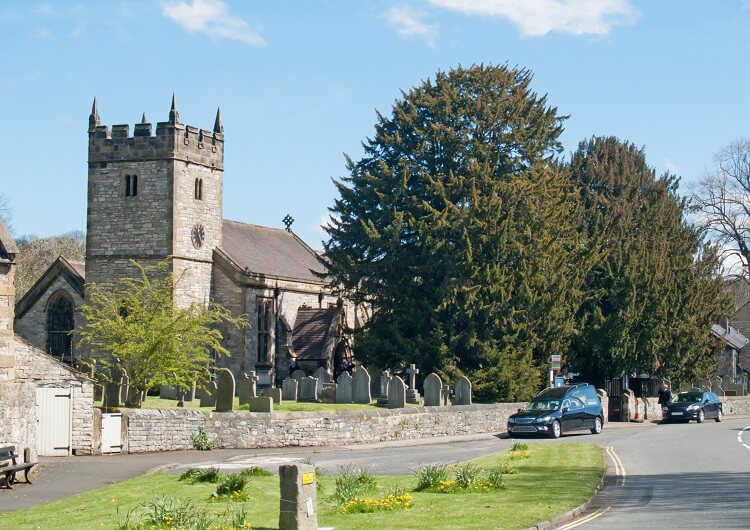Guide to funeral cars and transport
Last reviewed 25th July 2024
3 min read

The most important funeral car is the hearse, which is specially designed to transport the coffin. The hearse will typically lead a funeral procession made up of other funeral cars or vehicles carrying the mourners from the location of the funeral ceremony to the burial place.
What is a hearse?
A hearse is a specialised vehicle used to transport the coffin at a funeral. Modern hearses are usually cars, but they can actually be any form of transport, including carriages pulled by horses or bikes.
The front half of the hearse will normally look very similar to any other car, but the back half includes a longer, taller space than normal to allow the coffin to fit inside. The back half of the hearse might have windows to allow the coffin and any decorations to be seen, or it can be completely blacked out.
Types of funeral transport
The hearse is the main mode of funeral transport to consider when planning the day. It is usually a funeral car, but could be a carriage pulled by horses, bikes, or something else. The hearse can be customised or decorated to reflect the wishes and personality of the deceased.
The hearse usually leads a funeral procession (also known as a funeral cortege) made up of other vehicles. The procession doesn’t have to include dedicated funeral cars, though you can hire them if you want larger cars or want all the mourners to travel in the same way. Many funeral directors can arrange for limousines or larger cars to allow more mourners to travel together.
Mourners can instead choose to use their own cars, or you could make arrangements for other transport if it’s more appropriate for the funeral’s theme. If the distance from the ceremony to the burial is short, you can even have a walking funeral procession.
How many people can fit in a funeral car?
A hired funeral limousine will typically seat between six and nine people, plus a chauffeur. Large stretch limousines can carry even more people, but there is no requirement to use large cars in the funeral procession.
Who goes in which car at a funeral?
Though funeral car seating within the procession is ultimately the choice of those arranging the funeral, there are traditions of funeral etiquette(www.yourfuneralchoice.com opens in a new tab) that can serve as guidelines.
The hearse is chauffeur-driven, and normally occupied by the driver, a bearer, and the deceased. After the hearse, the first car traditionally contains the spouse or partner of the deceased and any immediate family, like children, siblings, or parents. Other family and friends can then be seated in the following cars as you wish.
However, you are free to arrange the funeral procession in any way you like. If friends or non-immediate family members were particularly close to the deceased, they could be seated in the first funeral car.
Who provides funeral cars?
Funeral directors often have their own fleets of funeral cars containing a range of different options. Whether or not they have their own cars, they are also likely to have access to other funeral vehicle providers who can help with more unique or specialised requests.
If having a specific funeral car is important to you, it is a good idea to talk to your chosen funeral directors about it as early as possible. If you haven’t yet chosen a funeral director but you have a specific hearse or other car in mind, looking for a director that provides the right vehicle could be a good place to start.
How much do funeral cars cost?
It’s difficult to provide a standard cost for funeral cars as all providers will price their vehicles differently – it’s more helpful to be aware of factors that can raise or lower the cost. Generally speaking, specialist hearses are likely to be more expensive, whereas standard hearses within funeral directors’ fleets are likely to be cheaper.
For other funeral cars, size will be a factor in cost. A smaller, six-seater limo will be much cheaper than a 12-seater stretch limo, for example.
Some funeral directors also offer personalisation of the hearses and funeral cars for an additional fee – choosing this option allows you to turn standard funeral cars into something much more unique.
Learn more about funeral planning
If you'd like to know more about organising a funeral, including how to pay for it, take a look at some of our other articles:
The thoughts and opinions expressed in the page are those of the authors, intended to be informative, and do not necessarily reflect the official policy or position of SunLife. See our Terms of Use for more info.
